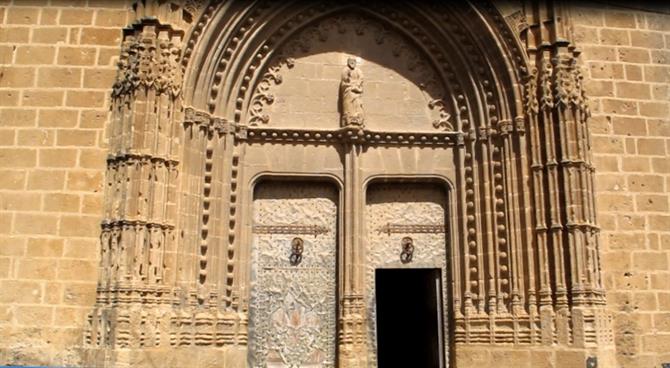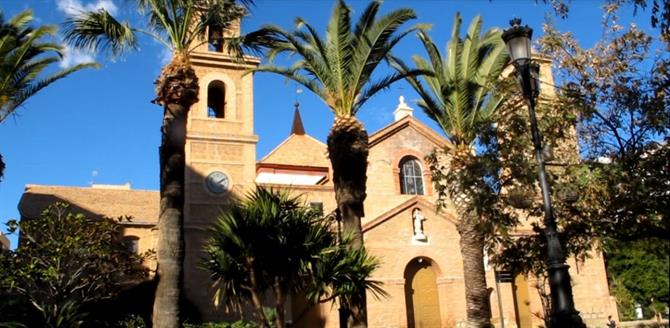Visit any city, town or village in the province and it is almost inevitable that the most imposing building is the church or cathedral. This is hardly surprising because for centuries after the defeat of the Moors in the 13th century, the Roman Catholic church enjoyed vast wealth as even the poorest peasants paid their dues to the churches of what was a deeply religious country.
The churches tell the story of places they dominated and that is why anyone visiting Alicante region could do worse than take time out to see what the religious buildings have to offer.
Baroque beauty
Where better to start than in Alicante city itself, which is the home of the cathedral of San Nicholas de Bari.The church was built between 1613 and 1662 over the site of a Moorish mosque and it has a blue dome which is more than 45 metres high. It has a Latin cross ground plan and six side chapels, including the chapel of Holy Communion which is considered to be one of the most beautiful examples of Spanish Baroque in the country.
Classic works of art
Further south is the city of Orihuela and the cathedral of El Salvador. A church has existed on the site since the end of the 13th century and was built over the old Aljama mosque.The Gothic building, built in the 14th and 15th centuries, is well worth a visit, if only to see “The Temptation of Saint Thomas” one of the masterpieces by the great artist, Diego Velazquez(1599-1660), the court artist of Philip IV.
Unique play
Between the two cities is the university town of Elche, which is also the home of the Spanish shoe-making industry.Among its many attractions is the Misteri d’Elx, a unique liturgical drama that was written in the 13th century in the Valencian language, which also includes music.
The Santa Barbara basilica was built in the 17th century as home for the play which is performed each August.
War memorial
Many a town in the region is dominated by its castle. Not so the pleasant, coastal resort of Altea, just 10 minutes’drive north of Benidorm. Altea is an exception because it is overlooked by its magnificent, blue-domed church of Nuestra Senora de Consuela. It is well worth the climb up the steep, narrow streets to find this gem of a church.
There has been a church there for more than 900 years and it also a permanent reminder of the destruction wrought by the Spanish Civil War (1936-39). During that conflict one of the bell towers of the church was destroyed by Franco’s Nationalist forces.It has never been repaired, a constant indication of the damage the war caused to many historic buildings of Spain.
The church stands in a square lined with bars and restaurants and there is also a mirador (viewpoint) from which visitors can admire the peerless views of the Mediterranean Sea and, to the south, the skyscrapers of Benidorm that seem a world away from the peace and quiet of the old town of Altea.
First Russian Orthodox church
Between Altea and Calpe, the busier,bustling resort to the north, lies the luxury development of Altea Hills and it is here that the first Russian Orthodox church in Spain was built. The church of Saint Michael the Archangel was opened in 2007 and stands just off the N332 that runs the length of Alicante province.
The church was funded by a Russian entrepreneur who has business interests in the two towns and was built with the co-operation of the local Roman Catholic clergy.It is an exact replica of a 17th century Orthodox temple in Russia and building materials for the church were flown in from as far away at the Urals. Also, specialist craftsmen from Russia were drafted in for the construction work.
The church is open from 10am to 2pm Mondays to Fridays, 10am to 8pm on Saturdays and 8am to 6pm on Sundays.
Awesome architecture
North of Calpe on the N332 is the town of Benissa which is dominated by the Purissima Xiqueta church which was opened in 1929 and gradually replaced the old fortified church, which fell into disuse and was eventually demolished. It is well worth a visit, if only for its size and the grandeur of its architecture.

Major fortress
Travel north to Javea, about half an hour away by road, and the visitor will discover two of the most interesting churches in the region.The first, that of Saint Bartholomew,dominates the old town of Javea and is one of the major fortress churches of Spain.In bygone days the coves along the rugged coastline in the area were used as shelter by pirates from North Africa who were a constant threat to Javea’s fishing and raisin industries.
Thus the church, which dates back to the 14th century and was designed by Valencian architect Domingo Urtega, was developed both for worship and the protection of the townsfolk.Its massive towers afforded the protection and the walls bear witness to the cannon fire of previous conflicts, including the War of Spanish Succession in the early 18th century and the Napoleonic Wars.
In 1812 Napoleon’s troops besieged the church and one of the priests held them at bay hurling rocks from one the towers. Eventually the troops forced their way in, climbed the tower and sent the heroic priest to his death by hurtling him into the square below.
Fishermen pay tribute
Walk down to the port of Javea and there you will find a modern church dedicated to the patron saint of fishermen. The church is called Our Lady of Loreto and is named after the Virgin of Santa Loreto.It was inaugurated in 1967 and the story goes that a large number of Javea fishermen were once caught in a violent storm and the terrified men vowed that if they survived they would build a church to the saint who had saved their lives. This they did and the 12 pillars that hold the church roof represent the 12 Apostles and the roof itself resembles the hull of a fishing boat.
The church’s unusual design is said to be on a par with such classics as Liverpool’s Metropolitan Cathedral and the Cathedral of Brasilia in Brazil.
Ancient relic
Not to be missed is the Monastery of the Holy Face (Santa Faz), just off the N332 a few kilometres north of Alicante.It holds a relic that was brought over from the Vatican in the 15th century and is said to be the linen cloth with which Veronica wiped Jesus’s bloodied face on his way to Crucifixion.Each year the citizens of Alicante take part in a pilgrimage of more than 250,000 people to the monastery on the second Thursday after Easter.The monastery is open Monday-Thursday 10am to 2pm, Friday 11am to 8pm and Sunday 8am to 2pm.

Important sculptures
The main church of Torrevieja is the Church of the Immaculate Conception in the city’s main square. It was built in 1880 in Neoclassic style with vaulted ceilings and the altar has an image of the Purisima Concepcion, the patron saint of the city. It also has a number of other important sculptures.
